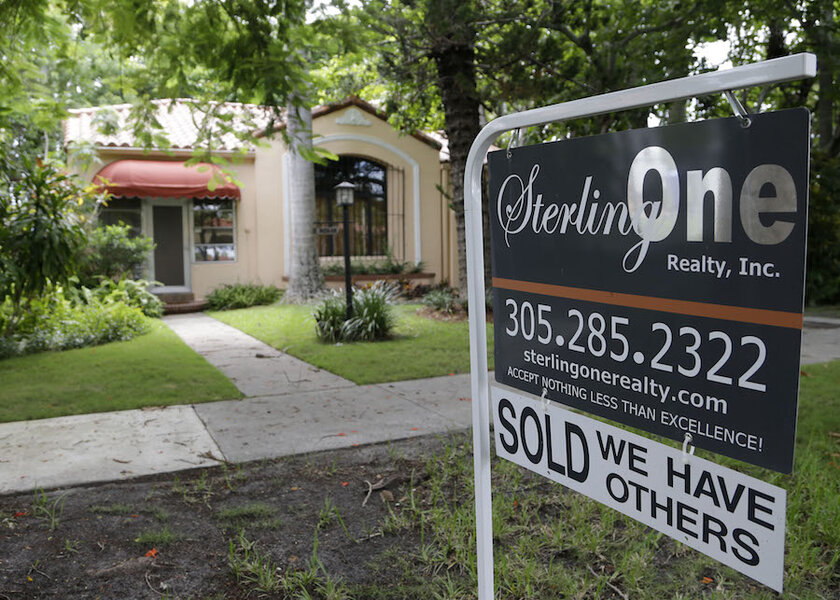Fed hikes interest rates: what it means for homebuyers, owners, and mortgage refinancers
Loading...
Wednesday’s move by The Fed to hike short-term interest rates by 0.25% doesn’t mean that long-term rates — like mortgage interest rates — will immediately rise. But the run of low mortgage rates will certainly end eventually. Whether it’s sooner or later, there is simply no need to be caught by surprise.
Evaluating where you stand now, and how your housing budget could be affected when mortgage rates do go up, could save you thousands of dollars in interest costs. In other words, it’s not time to panic, but time to plan.
Get advice from a mortgage broker:
- Understand what you can afford
- Find the best loan
- Get approved and funded in 15 days
For all borrowers, rising rates make it harder to get a mortgage.
Jonathan Smoke, chief economist at Realtor.com, expects a 0.50% increase in mortgage rates over the next 12 months. Even that small of an increase can make it more difficult for borrowers to qualify for a loan.
“Based on analysis of loan-level ratios for a large sample of loans approved in the first half of this year, as much as 7% of mortgage applicants would have failed to get approval as a result of higher debt-to-income ratios caused by higher rates,” Smoke says.
Here’s a plan of action for each type of borrower:
What higher mortgage rates mean for first-time homebuyers
As mortgage rates creep higher, first-time homebuyers may have to lower their target home price. Each half point (0.50%) increase in the interest rate adds close to $100 a month to a payment for a 30-year mortgage on a $300,000 home. To maintainaffordability, house hunters may have to modify their wish lists to include smaller homes, fewer amenities or longer commutes.
What to do now: Improving your credit score will help earn you a lower mortgage rate, and that’s even more important when interest rates are rising. Reduce debt, check your credit report for errors and save as much as you can for the down payment.
How rising interest rates will affect repeat homebuyers
If you expect to move in the next couple of years, it’s quite possible that you’ll be trading a lower interest rate mortgage on your current home for a higher one at your new address. If housing prices continue to rise while interest rates climb, affordability will become a greater factor in making a move.
What to do now: Moving from one city to another will require research into home values and cost-of-living comparisons. A raise in pay that looks good now may not serve you as well if you move to a higher-cost area. In-city moves will be easier, but upgrading to a larger or newer home will require consideration not just of a higher price, but also the impact of a likely higher interest rate.
What the Fed’s rate hike means for home refinancing
In an era of low interest rates, home refinancing became almost a biennial tradition for some homeowners. Now, as a reverse cycle begins, that fever will surely subside. It’s time to take some preventive measures.
What to do now: Check your current mortgage rate. If it’s been a few years since you bought or refinanced your home, you’ll want to compare your current interest rate to today’s mortgage rates to see if refinancing makes sense. It could be a long time before we see interest rates this low again.
What a rising interest rate environment means for ARM holders
If you currently have an adjustable-rate mortgage and plan to stay in your home for several more years, it’s time to consider refinancing into a fixed-rate loan. Of course, you’ll need to also weigh fees and closing costs.
What to do now: Check mortgage rates to see if this could be a good time to convert your ARM to a fixed-rate loan, before rates move much higher.
How to manage a HELOC as rates rise
Home equity lines of credit, or HELOCs, deserve healthy scrutiny when rates are rising. Tapping your home’s equity with the ease of a credit card can back you into a corner fast. Before you know it, you can have a sizable balance accruing interest, just as rates start moving against you.
Even worse, you might be approaching the end of your draw term and facing a payout period at the very time interest rates are climbing.
What to do now: Some lenders offer conversion features, allowing an adjustable-rate HELOC to become a fixed-rate home equity loan. If you don’t need the ongoing availability of your equity reserves, you could lock in a final equity draw with a conversion to a fixed-interest loan at current low rates. If that option isn’t available to you, consider doubling up on your principal-reduction payments while rates are still low, or investigate the possibility of refinancing the HELOC balance into your primary mortgage.
This time, it’s different — or is it?
Due to some economic conditions, some financial experts are saying this cycle of Fed rate hikes is different. But as famous investor John Templeton said, “The four most dangerous words in investing are, ‘This time it’s different.’ ”
No one can predict an economic cycle and how it will unfold — or unravel. By taking a close look at your current and near-future mortgage needs, you can best prepare for what’s next.
Hal Bundrick is a staff writer at NerdWallet, a personal finance website. Email:hal@nerdwallet.com. Twitter: @halmbundrick
This article first appeared in NerdWallet.







